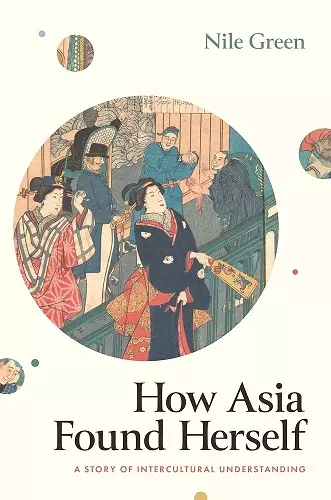How Asia Found Herself
A Story of Intercultural Understanding
Format:Hardback
Publisher:Yale University Press
Published:24th Jan '23
Should be back in stock very soon

A pioneering history of cross-cultural knowledge that exposes enduring fractures in unity across the world’s largest continent
“Mr. Green has written a book of rigorous—and refreshing—honesty.”—Tunku Varadarajan, Wall Street Journal
A Foreign Affairs Best Book of 2023
The nineteenth century saw European empires build vast transport networks to maximize their profits from trade, and it saw Christian missionaries spread printing across Asia to bring Bibles to the colonized. The unintended consequence was an Asian communications revolution: the maritime public sphere expanded from Istanbul to Yokohama. From all corners of the continent, curious individuals confronted the challenges of studying each other’s cultures by using the infrastructure of empire for their own exploratory ends. Whether in Japanese or Persian, Bengali or Arabic, they wrote travelogues, histories, and phrasebooks to chart the vastly different regions that European geographers labeled “Asia.”
Yet comprehension does not always keep pace with connection. Far from flowing smoothly, inter-Asian understanding faced obstacles of many kinds, especially on a landmass with so many scripts and languages. Here is the dramatic story of cross-cultural knowledge on the world’s largest continent, exposing the roots of enduring fractures in Asian unity.
“Mr. Green has written a book of rigorous—and refreshing—honesty.”—Tunku Varadarajan, Wall Street Journal
“For centuries the people of the region’s western and southern parts and those of the east and south-east have struggled to make sense of each other. That struggle is at the heart of How Asia Found Herself.”—The Economist
A Foreign Affairs Best Book of 2023
“Green’s book is a tour de force. . . . The question he asks—what is Asia, and on whose terms?—is thrilling, invigorating and important.”—Peter Frankopan, The Spectator
“In this fascinating and original study, Green explores sources in Arabic, Persian, Urdu, and other languages to see how Bahai, Buddhist, Hindu, Muslim, and Zoroastrian travelers, merchants, and polemicists tried to understand and influence the societies and cultures of China, Japan, and Southeast Asia.”—Foreign Affairs
“A compelling and refreshingly original study of dizzying scope that, drawing on a vast corpus of mostly untapped source materials in Asian languages, brushes aside easy assumptions of Asian interconnectivity.”—Yorim Spoelder, Asian Review of Books
Awarded the Bentley Book Prize from the World History Association
“A majestic study of inter-Asian interactions. Green explains in dazzling detail how Asians came to understand the concept of Asia. How Asia Found Herself demonstrates how inter-Asian interactions, and Asia herself, must be studied and analyzed.”—Tansen Sen, author of India, China, and the World
“How Asia Found Herself marks a radical shift in perspective. Nile Green’s superb book traces pivotal but forgotten encounters among Asian travelers and intellectuals who discovered their own cultures anew through intercultural dialogue and translation. This is a model of polyglot, boundary-crossing research—and a beautiful and moving story of urgent contemporary relevance.”—Sunil Amrith, author of Unruly Waters
“With great attentiveness and sensitivity to detail, Nile Green has produced the first-ever truly inter-Asian intellectual history, uncovering the central role of religion in this story. Deftly researched and written, original, daring and more than fulfilling its promise, this book is an inter-Asian triumph.”—Zvi Ben-Dor Benite, author of The Dao of Muhammad: A Cultural History of Muslims in Late Imperial China
“Green writes erudite and elegantly crafted works of history that connect different parts of the world in stimulating and unexpected ways. His latest and most ambitious book makes a sparkling contribution to the fields of world history, comparative intellectual history, and Asian studies and is a pleasure to read.”—Jeffrey Wasserstrom, editor of The Oxford History of Modern China
ISBN: 9780300257045
Dimensions: unknown
Weight: unknown
472 pages